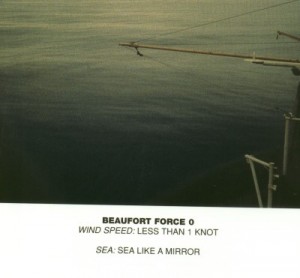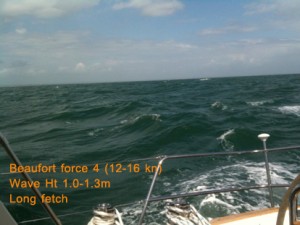Planning for a possible boat day last night, we of course kept a close eye on the weather forecast.The weather according to the NOAA national weather service forecast was still looking fairly decent: northwest winds 10 knots, seas 2 to 3ft, waters a light chop, etc. We are pretty restricted by the weather as I’ve said, and generally don’t go out in winds more than 10 knots or so. Anything stronger than that and we get a sea state that is unworkable for us, meaning we would have a very hard time keeping track of the whales, putting equipment in the water, taking it back out, recording video, collecting behavioral observations, etc. So 10 was a definite possibility. We all went to bed early and were up at 6:30 to check the weather again.
When we got up, the national weather service forecast was the same, but when we took a look at the real time readings from some of the nearby buoys they were telling us the winds were blowing 11 knots with gusts of 15…that is a bit out of our comfort zone. We decided to see if the winds would drop out a bit as the forecast said. Around noon, we decided it looked like it might be alright judging by our view of the ocean from the deck and some of the nearby buoys. Since we were ready to go, we had the boat in the water at 12:45. One quick glance around us though and we all began to question the readings and forecast…in the channel we were already in a sea state 4 and we hadn’t even left the dock!
For those of you unfamiliar with how sea state is measured, here is a brief overview. Mariners use the Beaufort wind scale to describe the conditions of the sea as it relates to wind speed. The scale runs from force 0 (wind speed less than 1 knot) to force 12 (wind speed 64+ knots). Wind speed obviously influences sea conditions a great deal. Force 0 looks something like this:

Just for the sake of comparison, Beaufort force 12 looks a little something like this:

During my (albeit short) time on this project, I have discovered that the maximum sea state we can comfortably work in is about a 3. If we are out and on whales and it turns to sea state 4, we can manage, but it isn’t pretty. Here is what force 4 looks like (although now that I have shown you 12 it doesn’t seem like much):

So when we encountered that at the dock, we were skeptical that it would be nicer once we got out of the channel, but it has happened before so we gave it a shot. It was rough going I must say. When we finally got out of the channel, we were still in a sea state 4+ with 3-4 ft waves and a very short wave interval. In other words, it was nasty. We ventured out a little bit to see if maybe we were still just caught up in the currents from the channel, but it didn’t get any better. Looking at the horizon, it didn’t look any better anywhere…so that was that, we turned around and began to head in. Fortunately there was a dredge working right out of the channel, so we were able to ride in their wake back to the mouth of the channel, making it a much smoother ride than it would have been that’s for sure!
Now we are back at home waiting for our next weather opening (and watching the seas turn into a force 5 as we speak). Thursday looks like a possibility and Friday looks great, so now we just wait and hope for sea state 0!